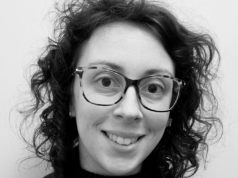
Investigators at the University of Southern California, Los Angeles, USA, have developed a severity adjustment model for predicting the healing trajectory of chronic wounds within 12 weeks. The research, published online ahead of print in Advances in Wound Care, affirmed that this model “can become the basis for applications like quality measure development, research into clinical practice and performance-based payment”.
“Chronic wounds represent a highly prevalent but little recognised condition with substantial implications for patients and payers,” emphasise authors Sang Kyu Cho, Soeren Mattke et al, who argue that, despite the development of improved wound care products and advanced treatment modalities, more consistency is required in how these methods are used in practice. However, “predicting healing rates of chronic wounds and comparing to actual rates could be used to detect and reward better quality of care,” they hypothesise.
Although a number of severity adjustment models have been developed, the authors note that many of these are limited due to relying on a small sample size, applicability to just one type of wound, and low prediction accuracy. They also acknowledge that more recent studies have “leveraged electronic medical records (EMRs) and machine learning techniques to improve prediction accuracy”, though the usability of these data is limited too.
Outlining their aims, Cho, Mattke et al write: “The objective of our study is to develop and validate a unified severity adjustment model for a broad range of chronic wounds that can form the basis for a quality measure, as it is entirely based on routinely collected data from intake visits at wound care clinics.”
In order to build this model, the investigators analysed EMR data for 620,356 chronic wounds of various aetiologies, accounting for 261,398 patients across 532 wound care clinics in the USA. Moreover, “patient-level and wound-level parameters influencing wound healing were identified from prior research and clinician input”, in addition to the development of logistic regression and classification tree models to predict the probability of wound healing within 12 weeks, “using a random sample of 70% of the wounds and validated in the remaining data”.
Of the wounds included in the analysis, 58.9% (n=365,659) were healed by week 12. Explaining the results, Cho, Mattke et al write: “Because of the large sample size, all variables, except for patients’ history of diabetes and chronic obstructive pulmonary disease, showed statistically significant differences, even when the absolute magnitude of the differences was small.”
Regarding usefulness, the authors reveal that the accuracy of a prediction model using only demographic variables was limited, with an area under the curve of 0.556, which only rose to 0.605 with the addition of indicators for comorbid conditions. On the other hand, “addition of variables capturing wound characteristics resulted in substantial improvement in predictive accuracy, with an area under the curve of 0.712”.
The study, although based on a large dataset, was limited, mainly because it only looked at data from one wound care system and would have to be validated with data from other settings. Also, these data were collected under real-world conditions, “without validation and/or formal assessment of coding quality,” and could be subject to measurement error.
“Our findings show that wound healing can be predicted based on real-world data from EMRs and a model based on prior evidence and clinical reasoning. Our model can inform clinical decision-making and form the basis for applications like quality measure development, future research into clinical practice to determine sources of variability, and performance-based payment,” the authors conclude.











